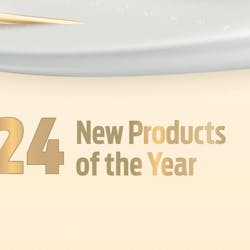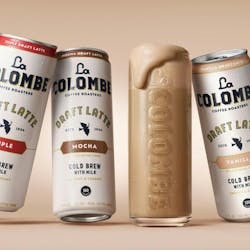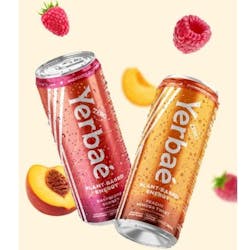With summer on its way, operators are looking to increase cold beverage sales by meeting the needs of consumers while maintaining their profitability. To do this during a recession, operators are adopting different strategies.Since the recession has made many consumers more cost conscious, some operators have switched from 20-ounce bottles to 12-ounce cans in the interest of offering a better perceived value.
At the same time, beverage bottlers continue to provide vending operators more glassfront beverage machines, giving them the opportunity to add more variety, and hopefully better values, as well as meet more diverse beverage tastes. These include wellness, energy, and ethnic preferences, all of which have driven cold drink sales in recent years.
Hence, operators are pursuing diverse strategies to maintain profitability and meet consumer needs.
Pricing continues to be a challenge for all products, and while operators have increased cold beverage prices in the last year, they have not kept pace with convenience stores as consumers continue to resist paying as much in vending machines.
Cans make a comeback
Steve Thornburg, general manager of Family Vending Co. in Coral Springs, Fla., says cans are making a big comeback in vending. “I don’t know if people ever wanted 20-ounce bottles,” he said. “I never heard someone drink a 12-ounce can and say ‘that’s not enough.’” Thornburg believes the 20-ounce bottles might have been a concoction by the bottlers to increase revenues.
Thornburg prefers cans because bottles cut capacity in half, produce more weight on the trucks, don’t cool down as quickly in the machines, don’t get as cold, and are more likely to foam over. The one drawback to cans is they don’t merchandise as well in glassfront machines. Filling the spaces with cans doesn’t look as appealing. “There’s so much space between the can and the next shelf, it doesn’t look full,” Thornburg said.
Family Vending sells cans for 75 cents to $1, which customers are more willing to pay than $1.50 for 20-ounce bottles. “When we go to a $1.50, we see a significant drop in sales,” explained Thornburg, “When we switch from bottles to cans, we see a significant increase in units, not dollars necessarily, but units.”
Cans help deal with price resistance
Camelback Vending in Phoenix, Ariz. also uses cans to address consumer price resistance, noted Jodi Glimpse, vice president of business development. She said if a location is at a $1 price point for bottles and a price increase is needed, switching to cans makes sense. “Changing over to cans allows the price to stay lower,” she said. Plus, she’s sold accounts on the environmental benefits of cans. Glimpse believes cans are more recyclable.
Her drivers also prefer working with cans, and it provides her with the ability to partner locally with a canner.
Glimpse is waiting for water in a can. “Schools have asked for it,” she said.
The Automatic Merchandiser State of the Vending Industry report quantifies the growing popularity of cans in the past year. The 2009 report noted a gain in the share of cans versus bottles. This was the first increase for cans in four years.
Despite the advantages of cans, Richard Harvey, owner of A&R Services in Monument, Colo. doesn’t believe they are the way to go because of something he calls “package competition.”
“We can be competitive with 20-ounce bottles,” he said, citing the $1.40 to $1.60 price point of comparable sodas in convenience stores, or even Walmart, which has a reputation for having the lowest prices.
“We can’t sell (cans) as a perceived value the way we can with bottles,” said Harvey. With cans, consumers can buy a 12-pack at a big box store for $2.99, which is much less per can than what’s charged in the vending machine.
The cost of a pack of soda, and its relative price per can, is something consumers do bring up. In response, Harvey argues there is a great advantage to the location for having a vending machine. A vending machine is a “refrigerated, inventory controlled beverage dispenser,” he said. Location managers don’t have to worry about employees pilfering cold beverages out of the fridge.
Variety addresses price sensitivity
Harvey has found glassfront machines allow him to increase variety. In traditional stackers, he was limited to seven or eight cans. A glassfront can hold a lot more variety.
Adding more variety also takes attention away from price increases, Harvey said, thanks to the higher price points many of these drinks carry.
Non-carbonated offerings allow Harvey to meet the growing demand for health oriented products.
“Customers aren’t necessarily asking for them (more non-carbonated beverages),” said Harvey, “but they’re happy it’s there.” Many customers tell him they really like a new non-carbonated beverage they tried from his machine.
“(Non-carbonated beverages) don’t merchandise well in stackers,” he said. Glassfronts, while requiring more maintenance and taking up more space, sell 20 to 25 percent more products. “It’s a better way of doing things,” added Harvey.
Glassfronts Help vendors compete with c-stores
“This company has always been strong in glassfronts,” said Steve Hall Jr., operations manager, Firelands Food Systems in Sandusky, Ohio. Hall believes glassfronts are necessary to offer the customer sufficient variety in order to compete with convenience stores. He estimates 70 to 75 percent of Firelands Foods Systems’ accounts have glassfronts.
Many of these machines have “healthy products” asked for by the clients. Over the past six months, Hall reports more accounts looking for these types of products due to employee wellness programs. The healthy products are almost exclusively in 20-ounce bottles, and while some are the same price as carbonated beverages, many are 25 to 50 cents more.
Energy drinks are even more expensive. Hall has been surprised because even though the economy in his area hasn’t really improved, Firelands Food Systems is selling more and more energy drinks.
The variety requested by customers is definitely a trend Hall has noticed. Five years ago, he remembers the company warehoused 80 to 90 different cold beverages. Now they have more than 200. “We continue to see an increase in different varieties,” said Hall. “That’s why we have so many glassfronts, to meet that demand.”
Schools provide opportunities in some areas
Some vending operators believe there is a new opportunity in school accounts as new nutrition requirements have caused some bottlers to retreat from this customer base.
In southern Florida, most bottlers have left the schools, noted Thornburg of Family Vending Co. With new beverage restrictions in these locations, sales have dropped, making the locations less profitable.
Thornburg believes his company can offer more beverage variety to schools than bottlers can. “We offer the variety and flavors that kids want,” he said. “We’re not held to corporate standards.”
In Thornburg’s area, schools allow the selling of soda as long as there is water and juice available in every machine. While soda is the top seller, Thornburg indicates students do buy a lot of water. He thinks it’s due to water being priced cheaper than juice at $1, rather than $1.75.
“Schools are an opportunity, but the phone’s not ringing off the hook,” said Glimpse with Camelback Vending. In the Phoenix area, bottlers are not voluntarily pulling out of schools. They are trying to hang on to their beverage contracts any way they can. Glimpse hears about the frustrations of new beverage regulations from her contacts at schools. The administrators report the kids still get the products they want, even if they aren’t available in the vending machines. “They (the school administrators) see it as revenue being taken away from them,” Glimpse said.
While schools are an opportunity for Glimpse and Thornburg, many operators reported little to no change in their school business. It depends largely on region.
Cashless readers sell higher priced beverages
Selling more drinks with higher price points by offering cashless payment systems is another opportunity. “We use a lot of credit card readers to promote higher priced items,” said Hall of Firelands Food Systems. He reports a 10 percent increase in cold beverage sales with the addition of a credit card reader, and notes that it’s always the higher priced items that are bought on credit. He mostly sees $1.75, $2.25 and $2.50 price points on the credit receipts.
Strategic pricing Aids some
Lee Hartnett, vice president and co-owner of Food Systems Inc./Commercial Coffee in Bridgeview, Ill., has started doing some creative merchandising with different price points, and sees more of that happening in the future. Some bottlers are offering Hartnett the lowest prices per case he’s seen in 10 to 12 years. This has allowed him to alter his beverage selections so he can offer Coke and Pepsi for premium prices, and other brands, like 7-Up, diet or regional sodas, for at least 25 cents less.
“In some cases it can be $5 or $6 a case less,” said Hartnett. That much difference means Hartnett can put the beverages in the machines and see which customers are shopping on price over brand.
While Hartnett sells a small amount of juices, flavored water and energy drinks, Hispanic-aimed beverages are growing. These 20-ounce bottles have really picked up in the last year, and he expects it to continue. He’s even trying to find dedicated machines for the popular brands.
His next most popular drink after soda is water. “Water outsells anything else (non-carbonated) by far,” he said.
Hartnett sells more bottles than cans, crediting it to the fact that consumers like resealable packages. Although whether he puts cans or bottles into an account is based on customer preference, no customer has ever asked him to take out bottles.
While his company has not picked up a lot of bottler-owned glassfronts, Hartnett believes the benefits to this type of equipment are clear. “I think it’s a great idea for merchandising,” he said, “Instead of 10 buttons, customers see 45 products.” Hartnett believes the different colored packages all lit up in these machines really draw the customer’s interest.
Marketing builds energy drink sales
The fact that customers are asking for more non-carbonated beverages hasn’t escaped Wayne Hood, regional manager for Continental Vending in Anaheim, Calif.
“I get more requests now directed toward the healthy items…and energy drinks, despite the higher prices,” he said. The energy drink known as Monster is especially popular in his area because the corporate headquarters is located in southern California, and the owner, Hansen Beverage, has done some heavy marketing.
While most operators don’t report customer concerns about the environmental impact of bottles, Hood is the exception. “(In California) we’re big in green, and recycle everything,” he said. Most facilities take care of their own recycling, working with groups on location or third party companies. Hood hasn’t had to change his selection due to the negative connotation in the press about bottled products.
The cold beverage business has become more challenging for vending operators due to price resistance, but operators are finding ways to meet this challenge, focusing on packaging, variety, creative pricing and more.
This month, vending operators in Colorado will feel the effects of a new state sales tax being levied on soda and candy, which had previously been exempt. Richard Harvey, owner of A & R Services, Monument, Colo., said the tax will cost him 2.9 percent of his gross profits. The Colorado vending council came up with a sticker to place on the vending machines when they raise prices in response to the tax, explaining the increase and that the state legislators are to blame. “It’s just a sin tax,” said Harvey.





